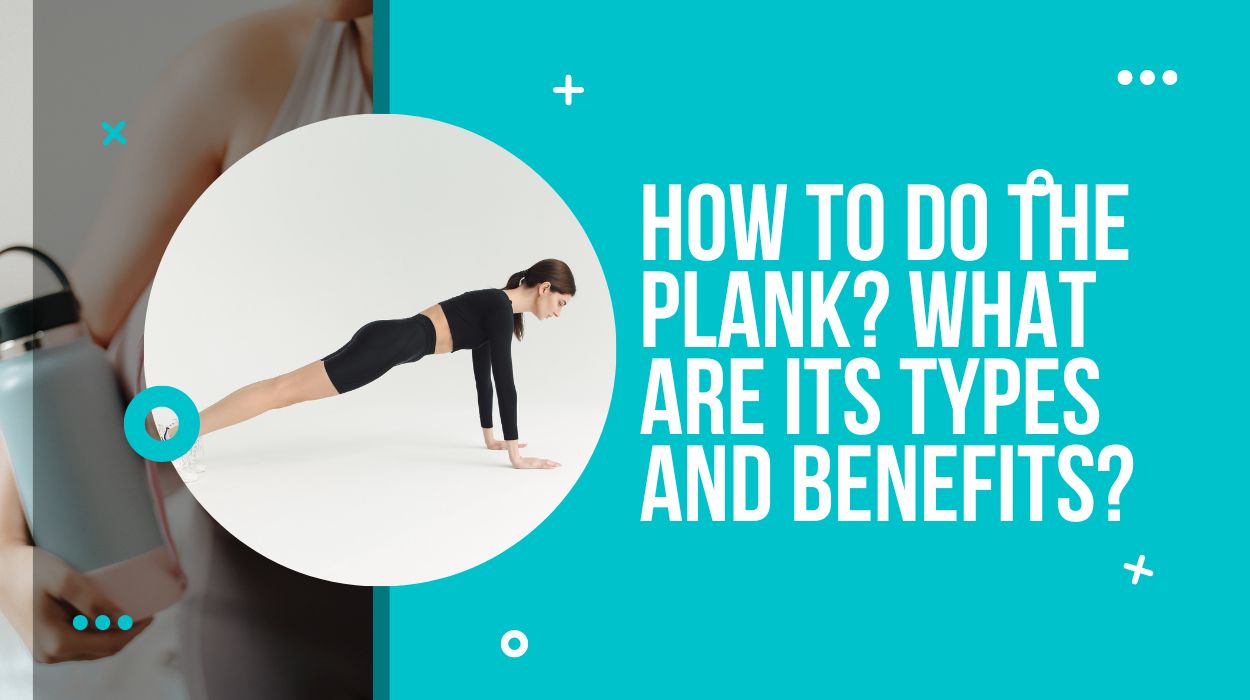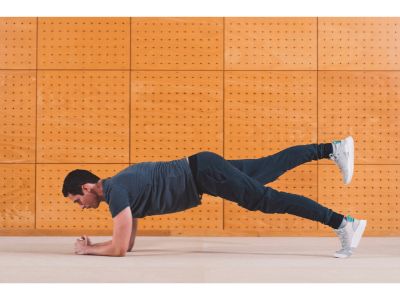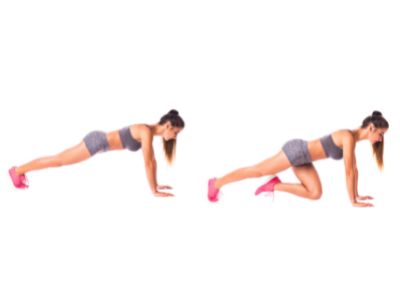Are you starting out on your exercise journey? Then you will have heard about planks. It is a highly effective exercise that requires no equipment and can be performed anywhere, making it accessible for everyone!
Are you worried about how to do planks? Or are you wondering, are you doing the plank right? Then you are in the right place! In this article, we’ve written instructions on how to achieve the perfect plank position, its types to keep your exercise routine interesting, and the benefits derived from it. Let’s dive right into it?
How To Do The Plank
Are you worried about getting into the proper plank position? It can be challenging for a beginner to figure it out at the start, but we have you covered! Follow the below-mentioned steps to get into the correct position.
Equipment required-
A gym mat- to prevent your elbows from bruising.
Muscles targeted-
your core and abdominal muscles
Steps to Follow-
Step one
Spread your mat on flat ground and lie down on your stomach.
Step two
Lift up your body by putting weight on the palms of your hands and get into the push-up position.
Step Three
Slowly bend your elbow and place your forearms (the front part of your hand below the elbow) on the ground, and lift your body so that your body weight is now transferred to your forearms.
Your heels should be above the balls of your feet, while your body is in a straight line right from the top of your head to the tip of your heels.
Step Four
Now hold this position while keeping your body rigid; make sure to keep breathing normally. While doing this, ensure that your back does not arch inwards, as this will reduce the position’s effectiveness.
Step Five
Work your abdominal muscles and pull your stomach inside, drawing your navel towards your spine. Make sure your shoulders are straight and downwards; they should not be raised up to your ears.
Step Six
Keep your body in this position for as long as you can.
Remember- as a beginner, it will be hard to keep your body in the plank position for a long time. Even if you can hold the position for a few seconds, that’s a good start!
Step Seven
When your body starts shaking, and you know you can’t hold the position any longer, gently lower your body down to the ground and relax.
Mistakes You Should Avoid While Doing The Plank-
Do not arch your back, as this will put more weight on your arms and not engage the abdominal muscles making your exercise ineffective.
Do not tilt your head up; look down towards the ground because tilting your head up will cause strain on your neck muscles and might lead to injuries.
Do not sag your hips; you should keep them tight and engage your abdominal muscles; if you feel your hips sagging due to fatigue, break the position and relax.
What are The Types of Planks?
Now that you have mastered how to do the basic plank, let’s look at the variations you can include in your plank routine to make it more interesting, increase the difficulty, and be effective-
While starting these variations, use the above method to first get into the plank position and then-
Plank + Leg lift
the leg lift will help exercise your legs; as you work on your core muscles, you can follow the following steps-
Step one
get into the plank position.
Step two
When in the plank position, gently lift up one of your legs and raise it 5-8 inches above the ground.
Step three
Count till two, then gently lower your leg and raise up your other leg; keep doing this alternatively.
Plank + Arm lift
Like the leg lift, the arm lift works by removing one point of contact from the ground to make the exercise more effective.
Step one
get into the plank position.
Step two
gently shift your weight to your left forearm and lift up your right hand and extend it straight in front of you.
Step three
hold this position for three seconds, then gently bring back the hand to its previous place and get back into the original plank position.
Step four
repeat the same steps for the next arm and keep alternating it with fitting your exercise routine.
Knee Plank
The knee plank is an easier variant of the plank and can be performed when you might not be in the mood for something too strenuous.
Step one
get into the plank position.
Step two
gently lower one of your knees down to the ground and keep your body rigid.
Step three
hold this position for a few seconds, then bring your knee back up and return to the plank position.
Step four
Now repeat this with the second knee and keep alternating between the knees and fit your exercise routine.
Side Plank
Step one
get into the plank position.
Step two
gently lift up your right hand and right leg and twist your body so your weight is now on the left forearm and the balls of your left foot.
Step three
now stack your right foot on top of your left foot.
Step four
hold this position for a few seconds, then change your position to focus on the next arm, and keep alternating between them to fit your exercise routine.
What are the Benefits of doing Planks?
Planks are so popular currently because of the amazing benefits they pack! let’s have a look at what they are-
Burns Calories
It helps you burn more calories than traditional core exercises. This is because even when you do not have movement or lift any weight, you are constantly squeezing your abs and engaging your core muscles.
Improves Balance
Planks will help you improve your balance by engaging your core muscles- rectus abdominis, transverse abdominis, the external oblique muscle, and the glutes. You will gain more stability and strengthen your core muscles, improving your overall balance.
Improves Posture
Are you someone who is constantly told by their mom to stop slouching and stand up straight? Then planks are for you as they will help you improve your posture by engaging your core muscles, hence helping you balance your chest, shoulder, neck, and back better.
Increases Flexibility
While doing planks, you use mostly all your muscle groups; hence this will help you enhance your flexibility.
Calms your Mind
Planks have mental benefits too! They will help you calm your brain and improve your mood hence relieving anxiety and symptoms of depression.
FAQs
Question 1: How many calories do planks burn?
Answer: The answer depends on your weight and the time at which you can hold the plank. Planks will help burn around 3-4 calories per minute for a 150-pound person.
Question 2: How can I increase the time for which I can hold the plank?
Answer: Practising will help you increase the time you can hold the plank. Stop looking at the stopwatch frequently and focus on increasing the time every time you do the plank.
Conclusion
Planks are a great way to engage your core muscles and get in shape, so if you are looking into incorporating planks into your fitness routine, you now know the correct way to hold one, the variants you can try, and the different benefits derived from it!
Let us know in the comments which variant you think will be most effective!








